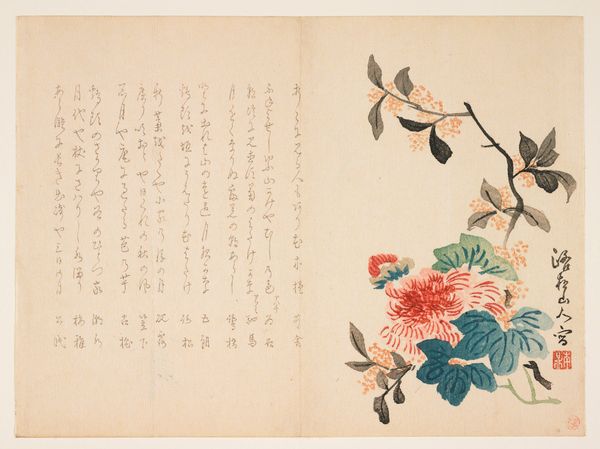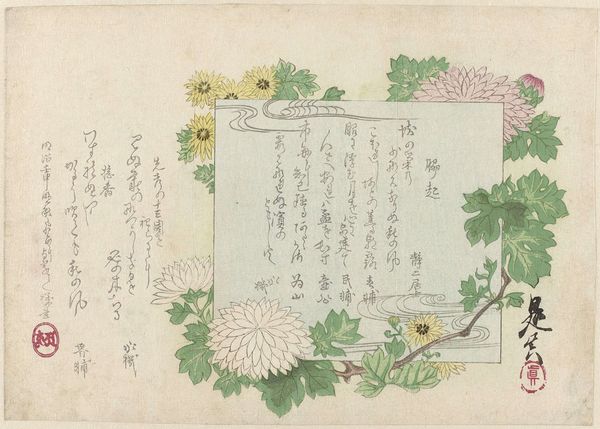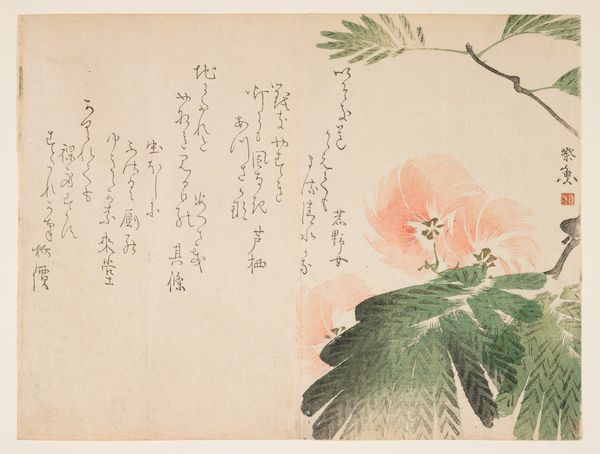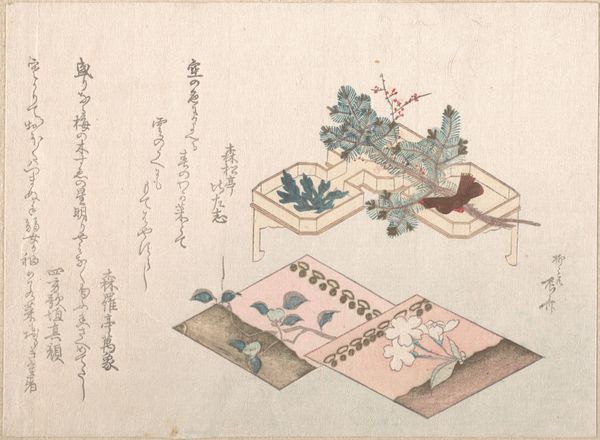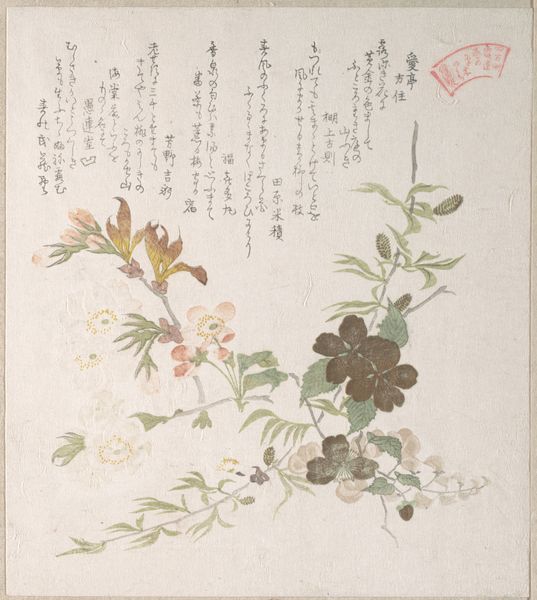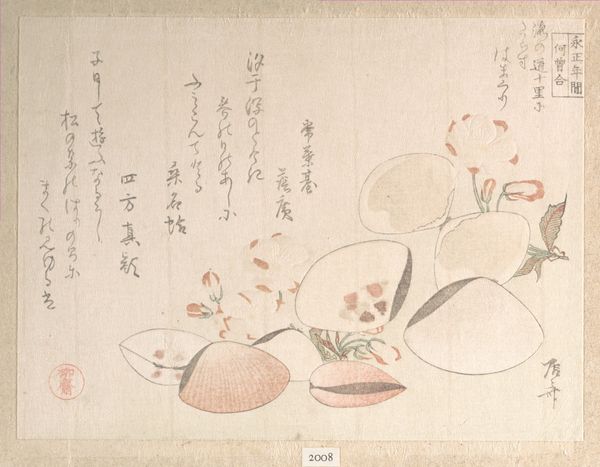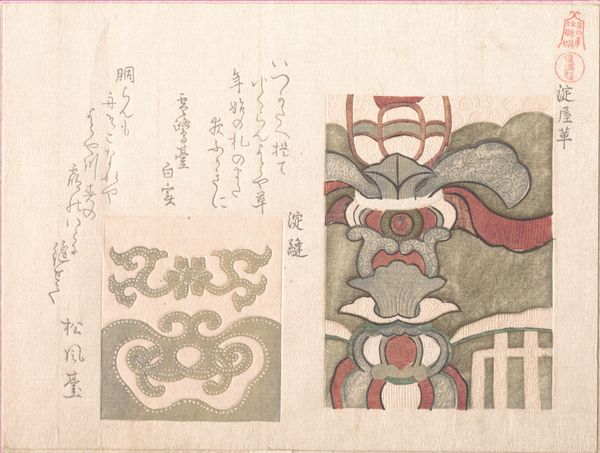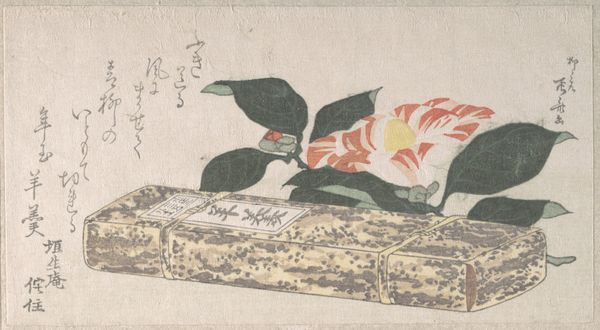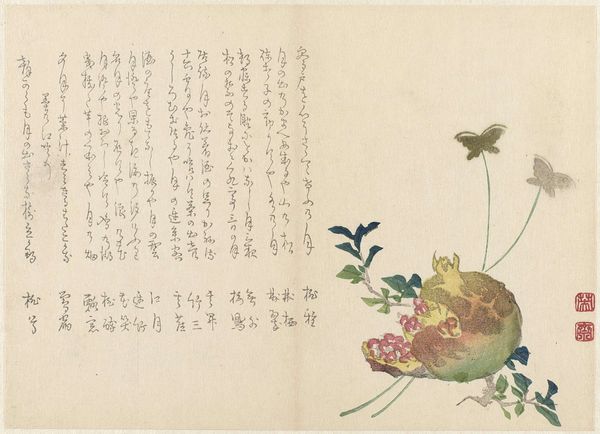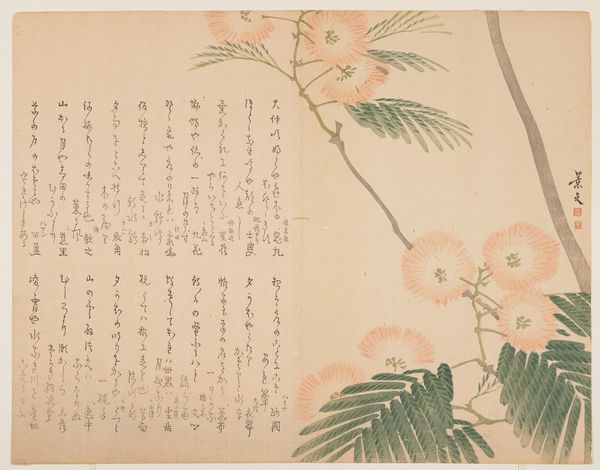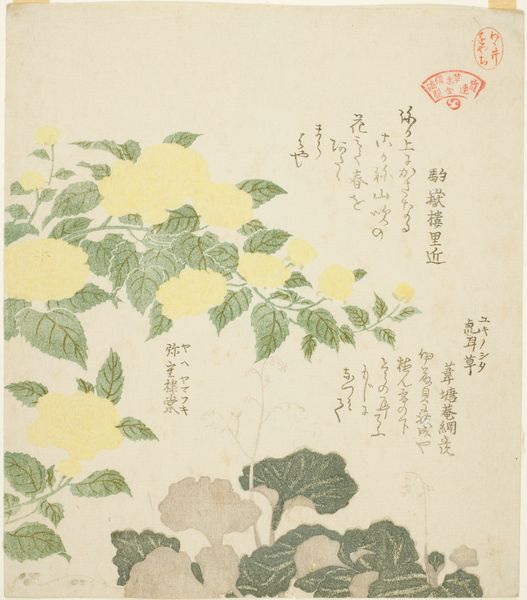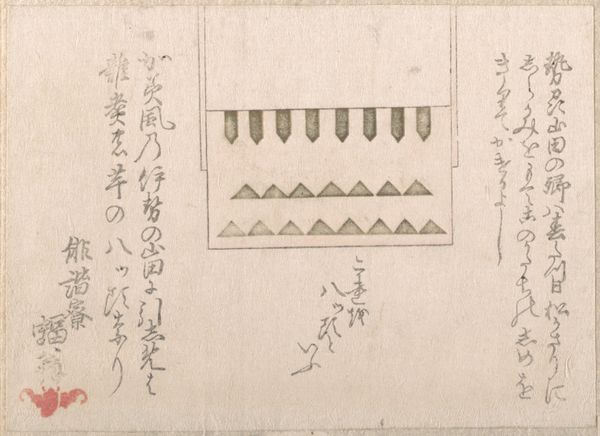
print, paper, ink, woodblock-print
#
water colours
#
pastel soft colours
#
ink paper printed
# print
#
asian-art
#
ukiyo-e
#
paper
#
ink
#
woodblock-print
#
watercolour bleed
#
watercolour illustration
Dimensions: 5 9/16 x 7 1/4 in. (14.1 x 18.4 cm)
Copyright: Public Domain
Curator: Here at the Metropolitan Museum of Art, we have before us “Designs for Leather,” a 19th-century print by Kubo Shunman, executed with ink on paper as a woodblock print. What impressions strike you as you view this piece? Editor: Immediately, I'm struck by how delicate and subdued the colours are—it’s almost like looking at a faded dream. The overall mood feels both tranquil and a little melancholic, as if the patterns are whispering secrets from a bygone era. What story does this print tell, in your understanding? Curator: In terms of social context, this print appears at a historical crossroads. Shunman lived during a period of considerable upheaval, straddling the late Edo and early Meiji periods as Japan transitioned from a feudal society towards modernisation. Prints, part of the ukiyo-e tradition, provided accessible imagery reflecting social tastes, consumer culture and artistic experimentation during this era. These designs might have functioned as sources of inspiration or pattern books for artisans involved in leather decoration. The material of leather itself can be read as symbolic of shifting power dynamics and engagements with the West. Editor: That’s a fascinating connection to the broader context of the era! I confess I'm also rather drawn to the imperfection in its execution – those blurred edges in the watercolour remind me of happy accidents when creating. To me, they humanise the design, giving it a charmingly vulnerable touch. The design has a playful blend of formalism and organic imperfection; were these designs actually employed in practice or meant only to be inspirational? Curator: Unfortunately, definitively tracking how these designs translated into actual leatherwork is challenging, given limited documentation from that time. We are left with the tangible expression of ingenuity and craftsmanship, reflective of a unique historical moment that balanced innovation with a deeply-rooted cultural heritage. Editor: Reflecting on this delicate interplay, the "Designs for Leather" encourages me to see art not only as representation, but also a dialogue with time. What begins as a utilitarian sketch transcends function and becomes something deeply resonant, filled with longing, history and human possibility. Curator: Precisely. Thank you.
Comments
No comments
Be the first to comment and join the conversation on the ultimate creative platform.
